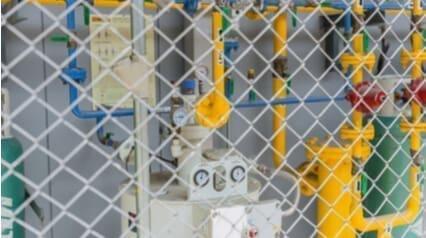What is Gas Safety?
Gas safety is the combination of practices and safety procedures that reinforce the controlled use and proper containment of potentially dangerous chemicals and flammable gases. It involves the inspection and maintenance of gas appliances and equipment in homes and in workplaces to keep workers and the general public safe.
Why Do You Need to Perform Gas Safety?
In addition to helping protect workers and the public against exposure to chemical, fire, and explosive hazards brought by the use and storage of flammable and harmful gases, performing gas safety will help parties required by law, such as landlords and business owners, to stay compliant with applicable regulations (e.g. UK’s HSE and USA’s OSHA) and continuously operate without risk of disruption, penalties, or business closure.
Hazards of Exposure to Dangerous Gases
Useful but potentially dangerous when its release is not controlled and used correctly, natural gas can leak in homes and in the workplace and lead to suffocation should it reach dangerous levels, not to mention cause fire or fatal explosion if exposed to sources of heat.
By being aware of the types of dangerous gases and chemicals present in the home and the workplace, and by following gas safety and health tips and proper handling, storage, and disposal procedures, you can help keep everyone safe against the hazards of exposure to dangerous gases.
Improve your EHS Management
Cultivate a safe working environment and streamline compliance with our EHS solutions.
Explore nowGas Safety Tips
Following gas safety tips can help workers, private homeowners, and landlords protect themselves year-round from the hazards brought by the daily use of flammable and dangerous gases.
Tip #1: Chemical safety and gases are present
Workplaces are required to conduct risk assessments in order to know what hazards, such as dangerous chemicals and gases, the workers can get exposed to. Risk assessments are ultimately conducted to help come up with control measures, e.g. making sure there is enough ventilation, to protect workers and other stakeholders.
Chemical risk assessment forms can guide occupational safety officers on identifying hazardous chemicals, combustible liquids, what they’re used for, the hazard they pose, and their containment, among others, to keep the workplace safe despite the presence of the identified dangerous chemicals.
Tip #2: Use detectors and safety tools
Use detectors and other safety tools as proactive and precaution measures to protect yourself against hazards brought by chemicals and dangerous gases. Facility managers and landlords can have carbon monoxide and natural gas detectors setup that will set off alarms if they detect dangerous levels of these gases that are both tasteless, colorless, and odorless in their natural form.
Have professionals install gas appliances with safety valves that add another level of safety and control for flammable gas.
Prolonged exposure to dangerous levels of said gases has been known to cause physical and neurological damage and can lead to fatalities. Having detectors and tools in place as preventive measures can help avoid such accidents.
Tip #3: Implement safety measures
Aside from the use of detectors and safety tools, other safety measures include conducting regular equipment checks and safety inspections to make sure that all gas appliances, containment vessels, detectors, and safety tools are indeed functioning correctly all year round.
Undetected damages on gas appliances or compromised functionality of safety tools can render them useless and fail to protect the people they’re supposed to keep safe. By conducting checks and audits regularly, whether they’re required by law or not, the responsible person assigned to proactively keep homes and the workplace safe can rest assured that these areas are as safe as they should be.
Effectively Implement Gas Safety Measures
Conveniently conduct safety inspections anytime.
Download SafetyCultureHow SafetyCulture Can Help With Gas Safety
SafetyCulture is a trusted inspection software that is used in multiple industries to reinforce safe practices and implement processes that comply with safety regulations. Empowering landlords, business owners, safety officers, and inspectors with the ability to oversee operations in compliance with safety best practices through regular safety inspections, immediate corrective actions, automated reports, and reminders for tasks due.
FAQ’s About Gas Safety:
The UK’s Health and Safety Executive (HSE) states that landlords are required to have gas safety checks done on each gas appliance of residential properties at least once every 12 months. Within one year before any lease starts, gas safety checks should have already been done as well.
Cylinders or pressure vessels that contain compressed gases should be handled with care and periodically inspected, ideally using a pressure vessel inspection checklist, to make sure that they are still able to safely contain the chemicals.
Some reminders when storing gas cylinders:
- Review the Material Safety Data Sheet and labels of chemicals contained in cylinders in order to be aware of their hazards and precautionary measures. (SDS template to create a sample MSDS in PDF)
- Maintain the ideal temperature, 52°C (125°F), and humidity level of storage areas used to safely contain gas cylinders.
- Utilize sensors, such as SafetyCulture Sensors, that can alert the responsible person such as a safety officer when storage rooms are not maintaining the ideal conditions for storing dangerous chemicals.
A gas safety check that is conducted by a registered Gas Safe engineer includes checking the following:
- The gas appliance is set up securely and adjusted to release just enough gas that will burn properly
- The room that contains the gas appliance is ideal and that the gas pipes are secure
- There is ample air supply and air vents are working properly
- Testing pipeworks to ensure that there will be no gas leakage
The annual boiler service is not automatically a part of gas safety but is also an important periodical maintenance check to make sure that boilers are safe and working at their optimal level.
A gas certificate, also called a gas safety record, is a document provided by Gas Safe engineers to landlords who need it as proof that gas appliances are checked and found to be safe for use.
Homeowners are not legally required to have gas certificates, but such documents acquired through thorough inspections can provide assurance that homes are indeed safe from flammable gas.
A gas safety certificate or gas safety record is valid for 12 months only. Landlords are required to provide new tenants with the latest gas safety record as gas safety checks should have been completed before a new tenant moves in.
Not a requirement but it is recommended that a prospective buyer gets to obtain the latest gas safety record before buying a house to ensure its safety.




